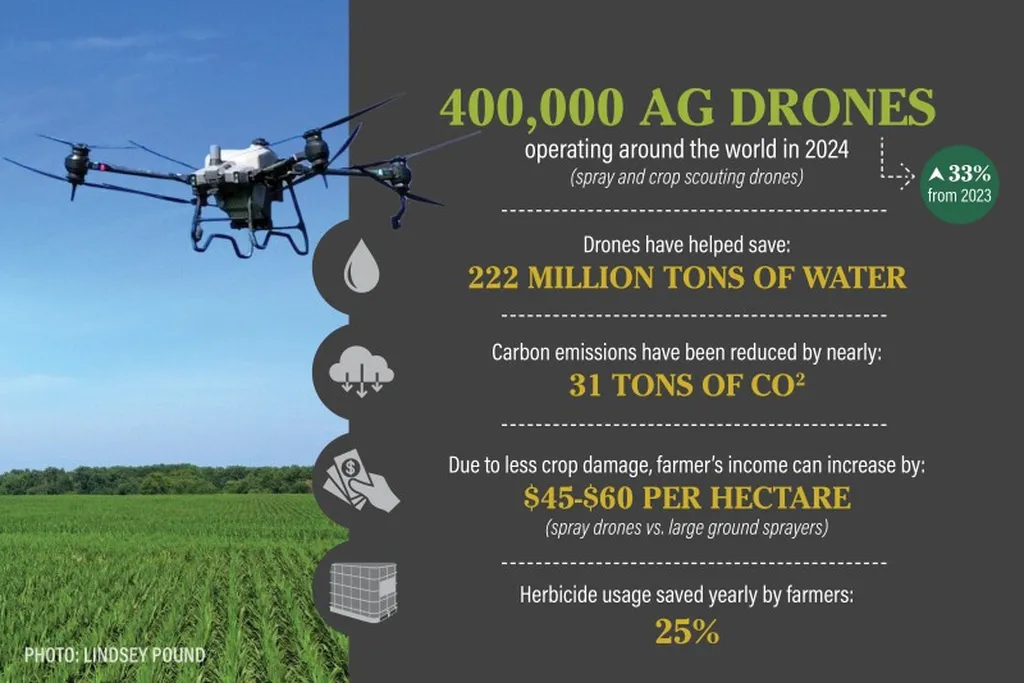In the rapidly evolving world of agricultural technology, unmanned aerial vehicles (UAVs) have emerged as a game-changer for crop spraying. A recent study published in *Smart Agricultural Technology* sheds light on the performance of multi-rotor UAVs equipped with centrifugal nozzles, offering valuable insights for farmers and agritech companies alike. The research, led by Weixiang Yao from the College of Information and Electrical Engineering at Shenyang Agricultural University, explores how different operational parameters affect spray deposition on maize and rice crops.
The study evaluated the impact of four key factors: the use of adjuvants, spray volume, atomization level, and UAV models. The findings reveal that adding adjuvants like Yaobijia significantly improves total deposition on the crop canopy, with a 40% increase for maize and a 23% increase for rice. However, the improvement in deposition distribution uniformity was found to be limited. “While adjuvants enhance overall deposition, they don’t necessarily make the distribution more uniform,” Yao noted. This insight could guide farmers in optimizing their spraying techniques to achieve better coverage.
Increasing the spray volume was found to improve canopy droplet deposition but could also amplify deposition differences within the canopy. This suggests a delicate balance must be struck to ensure even coverage without wasting resources. The study also highlighted that maize achieved better deposition distribution uniformity at the medium (M) atomization level, while rice demonstrated superior uniformity at the very fine (VF) level. “The choice of atomization level is crucial and should be tailored to the specific crop type,” Yao emphasized. This nuanced understanding could lead to more efficient and effective spraying practices in the field.
Interestingly, the study found that the variation in deposition between the same series of UAV models, such as the DJI T40 and T50, was not significant. This suggests that operators have greater flexibility in choosing UAV models without compromising on performance. However, the research also identified a need for improvement in droplet deposition on the leaves’ underside (UNS) for both UAV models. This could open up opportunities for further innovation in UAV design and nozzle technology.
The droplet size spectrum analysis revealed that over 50% of droplets on both crops were ≤100 μm, confirming the atomization efficiency of centrifugal nozzles. This efficiency is a critical factor in ensuring effective pesticide application and minimizing environmental impact.
The commercial implications of this research are substantial. For farmers, the findings provide a roadmap for optimizing UAV spraying techniques to achieve better crop protection and yield. Agritech companies can leverage these insights to develop more advanced UAV models and nozzle technologies tailored to specific crop types. The study underscores the importance of selecting the right atomization level based on crop characteristics, offering a strategic advantage in the competitive agricultural market.
As the agritech sector continues to evolve, this research could shape future developments in UAV spraying technology. By understanding the intricate details of spray deposition and droplet size distribution, the industry can move towards more precise and sustainable agricultural practices. The work of Weixiang Yao and his team at Shenyang Agricultural University serves as a testament to the power of scientific inquiry in driving innovation and progress in the field of agriculture.

